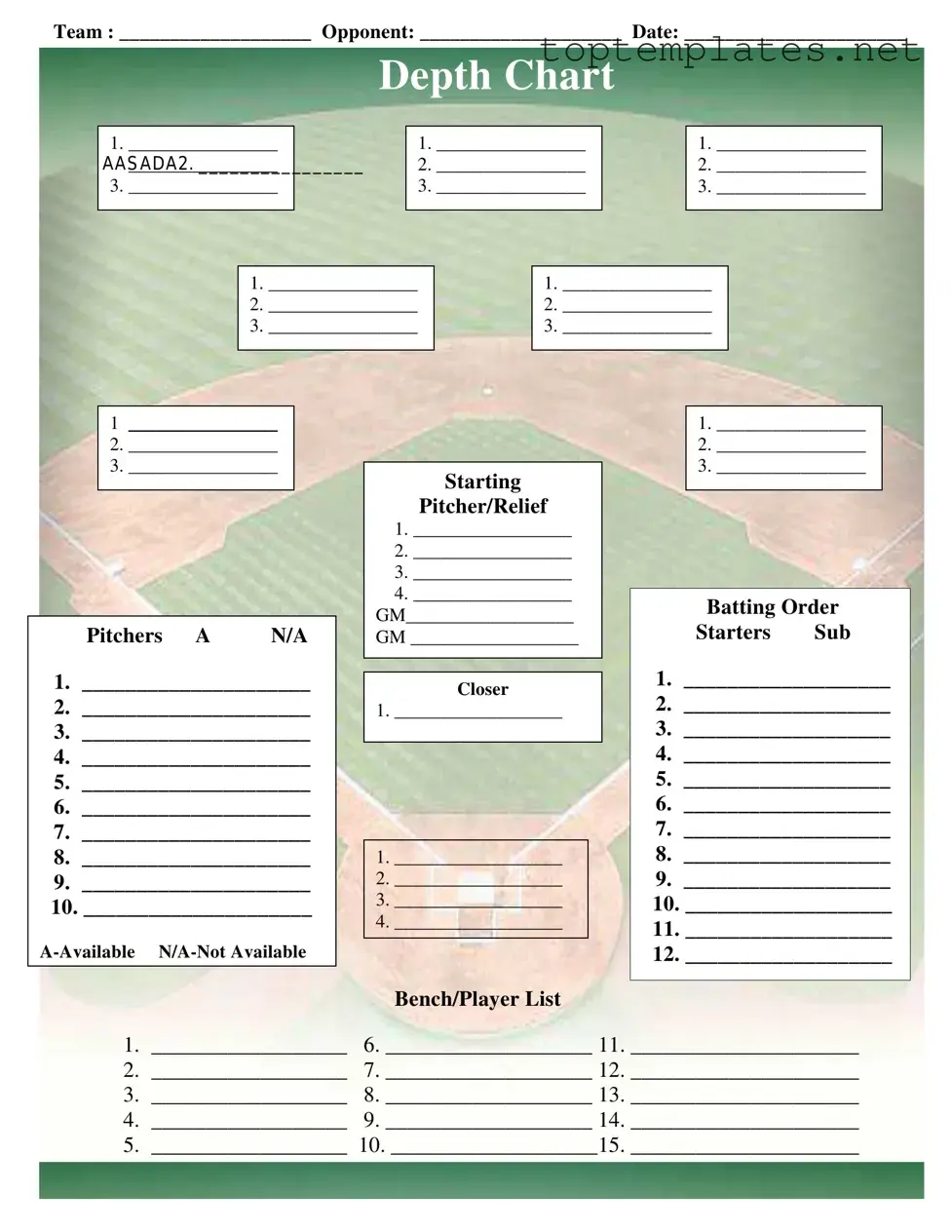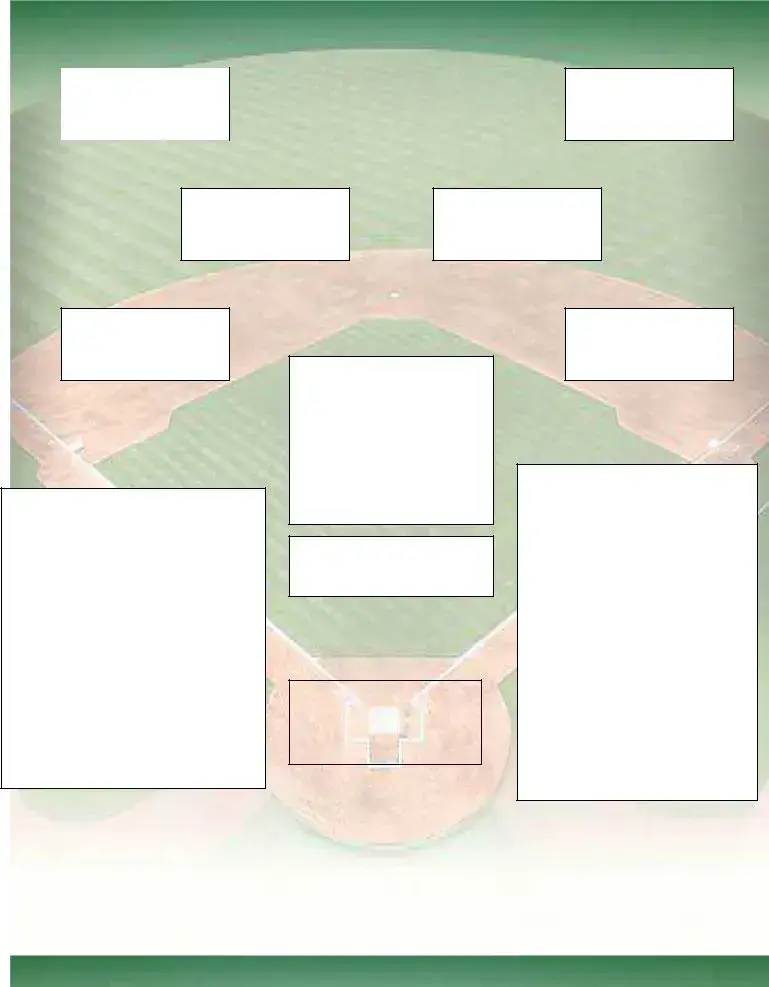What is the purpose of filling out the Baseball Field Lineup form?
The Baseball Field Lineup form is used to organize and document the team lineup for a specific game. It helps coaches and managers plan who will be playing in each position, their order in the batting lineup, and who will be available as substitutes. This organization is crucial for game strategy and ensuring all team members are clearly informed of their roles.
How do I fill in the team and opponent names on the form?
At the top of the form, you'll find spaces labeled "Team" and "Opponent." Write your team's name next to "Team" and the name of the team you'll be playing against next to "Opponent." This helps in keeping records organized and clear for later review.
What does the "Depth Chart" section represent?
The "Depth Chart" section is designed to outline the primary, secondary, and tertiary choices for each position on the field. This allows for strategic planning in case of injuries, tactical changes, or any unforeseen circumstances. It's a way to visualize the team's configuration and backup plan.
How should pitchers be listed in the "Pitchers" section?
In the "Pitchers" section, list the names of all available pitchers for the game. Mark them as 'A' (Available) or 'N/A' (Not Available) next to their names. This section is divided further into "Starting Pitcher/Relief" and "Closer," where specific roles in the pitching lineup can be assigned, ensuring clarity for the game's strategy.
What is the "Batting Order" section for?
The "Batting Order" section is used to list the names of players in the exact order they will bat in the game. Included are spots for starters and subs, allowing for a clear visualization of the game's offensive strategy and making in-game adjustments simpler.
How do I designate starters and substitutes in the batting order?
Starters are listed from numbers 1 to 9 in the "Batting Order" section, reflecting their order in hitting. Substitutes are listed from numbers 10 onwards, indicating players available to enter the game after the starters. This helps in managing the team's resources and strategy throughout the game.
What does the "Bench/Player List" include?
The "Bench/Player List" section includes all team members who are not in the starting lineup or listed specifically in other sections of the form. This ensures that every team member's role is acknowledged and available for quick reference during the game.
Can changes be made to the lineup after it has been filled out?
Yes, changes can be made to the lineup as needed, such as in response to last-minute injuries or strategic decisions. However, it's important to communicate any changes to all team members and officials involved to maintain clarity and fairness in the game.
Why is there a section for GM names?
Listing the names of the General Managers (GM) for both your team and the opponent provides a point of contact for any administrative or logistical concerns that may arise before or during the game. It fosters a professional and organized approach to game management.
How important is it to complete every section of the form?
Completing every section of the form enhances team strategy, organization, and communication. While some sections might seem more critical than others, each provides valuable information that can affect the game's outcome. It's best practice to fill out the form as completely and accurately as possible.

